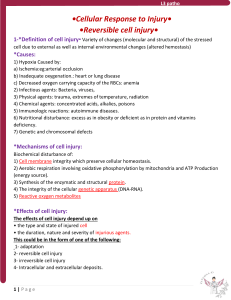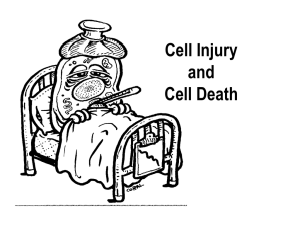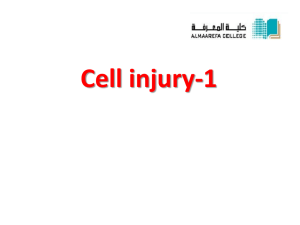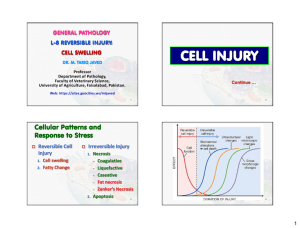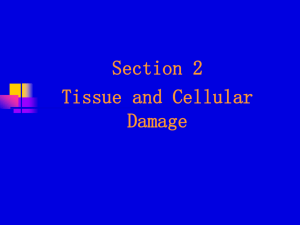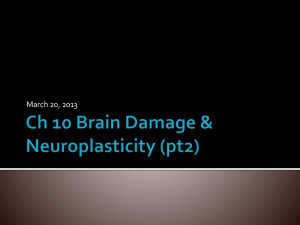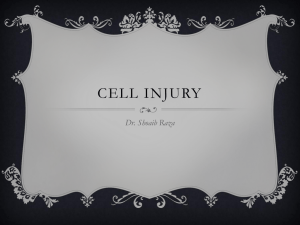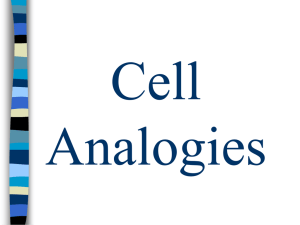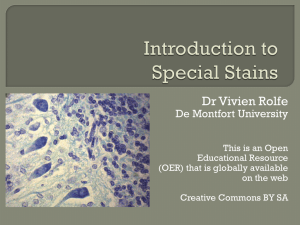Tissue and Cellular Injury
advertisement
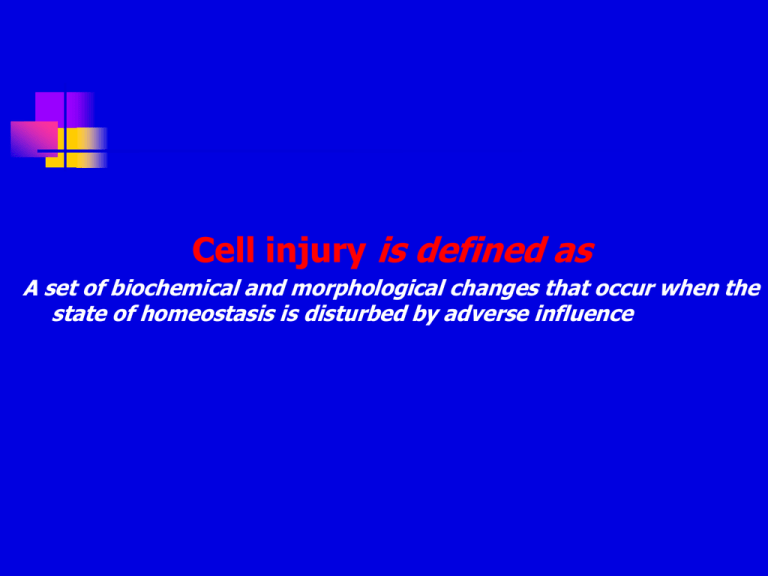
Cell injury is defined as A set of biochemical and morphological changes that occur when the state of homeostasis is disturbed by adverse influence CELL INJURY AND CELL DEATH Reversible cell injury occurs when the injurious agent is mild but persistent or severe but short lived. In this type of injury the functional and morphologic changes are reversible. With continuing damage, there is irreversible injury, at which time the cell cannot recover even with the removable of the injurious agent i.e. it dies. NOTE injuries Normal cell Reversible changes (Degeneration) injuries Normal cell Irreversible changes (Necrosis) Section 2 Tissue and Cellular Damage Calcium Infiltration Hydropic Degeneration Reversible cell injury Cloudy swelling Gross appearance of cloudy swelling Enlarged Wheight Pale Early stages: granularity degeneration——a fine granularity like ground-glass in the cytoplasm. Later stages: hydropic degeneration— —clear vacuoles in the cytoplasm Progressive dilatation of the swollen cell Normal cell Granularity change Hydropic change Reversible damage – cellular swelling Cellular swelling (hydropic change or vacuolar degeneration): this is due to paralysis of energy-dependent ion pumps of the plasma membrane. This leads to influx of sodium (with water) into the cell and departure of potassium out. It is the first manifestation of almost all forms of cell injury. Microscopically, there are clear vacuoles (of water) within the cytoplasm. Left Granularity change in kidney Right Hydropic change Swollen kidney tubules Normal kidney tubules Epithelial cells stain evenly pink (eosinophilic) in cytoplasm, with purple, basophilic, nucleic acids confined to the nuclei Apical surfaces are ciliated Interstitia not infiltrated with immune cells nor congested with proteins Fatty change of liver Left: Gross photograph .Center: HE Stain. Right: Oil Red-O Stain . Fatty change: this is manifested by the appearance of lipid vacuoles in the cytoplasm. It is principally encountered in cells participating in fat metabolism such as hepatocytes; as in alcoholic liver disease, malnutrition & total parenteral nutrition Mechanism: Impaired metabolism of fat Excessive triglyceride into the cell. (From ROBBINS BASIC PATHOLOGY,2003) 3-Amyloid degeneration General features: a ‘waxy substance’ (amyloid substance) composed essentially of an abnormal protein is deposited in the extracellular tissue, particularly around the supporting fibers of blood vessels and basement membranes. Detection: Post-mortem organs: Amyloid: deep brown Lugol’s iodine Normal tissue: yellow Pathological effects AMYLOID DEPOSITION Pressure on adjacent cells Atrophy Blood vessels Narrowing Increased permeability Transudation of protein out of vessels
